A bike derailleur is an essential component of a bicycle’s drivetrain system. It helps to move the chain from one gear to another, allowing you to shift gears and adjust your speed as needed.
However, like any mechanical component, a derailleur can break or malfunction over time. This can be frustrating and leave you stranded without a working bike. Fortunately, fixing a bike derailleur is not as complicated as it may seem.
You can quickly get your derailleur back in working order with some basic tools and a little know-how. We have got you covered with a complete guide on how to fix a bike derailleur issues. We will walk you through common issues bikers face regarding the derailleur and how to troubleshoot them effectively.
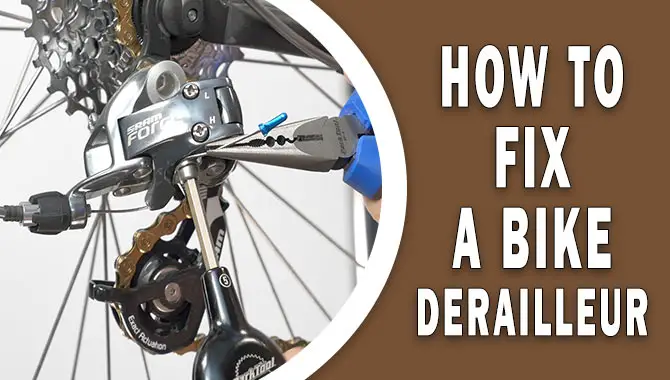
How To Fix A Bike Derailleur: Explained
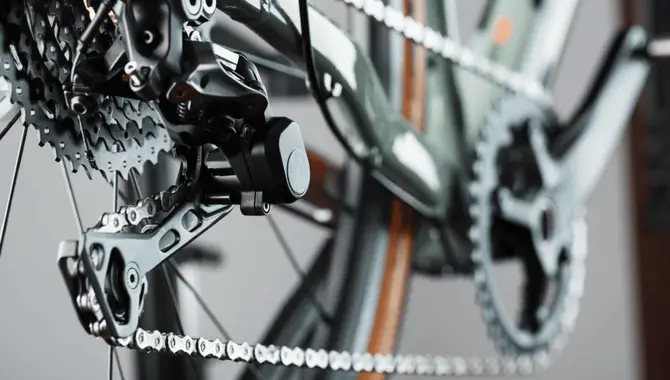
Fixing a bike derailleur can seem like a daunting task. You can do it easily with the right tools and some basic knowledge. The derailleur is responsible for shifting gears on your bike. So when it becomes misaligned or damaged, it can affect your entire ride. To fix a bike derailleur, you will need first to identify what the issue is. Common problems include bent or broken derailleur hangers, dirty or worn-out cables, and misaligned gear shifts.
Once you have identified the issue, you can adjust or replace the necessary parts. It’s important to take your time and ensure everything is properly aligned. And adjusted before taking your bike out for a ride. However. A bike derailleur can be tricky to fix, but with the right tools and patience, it is doable. Here are some steps to help you how to fix a bike derailleur.
Common Derailleur Issues
Before diving into the steps of fixing a bike derailleur, let’s look at some common issues that can arise. The derailleur hanger, which is the part that connects the derailleur. To the frame of the bike, can become bent or damaged over time. This can cause misalignment and affect shifting performance.
Another issue is worn-out or dirty cables, which can make it difficult for the derailleur to shift smoothly. Lastly, misaligned gear shifts can also be a problem, causing your bike to skip gears or not shift at all. Keep these common issues in mind when troubleshooting your bike derailleur.
How To Troubleshoot Derailleur Problems
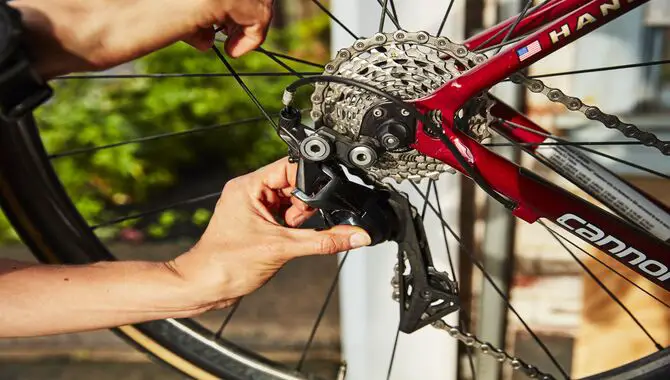
To effectively troubleshoot derailleur problems on your bike, there are several steps you should follow. Start by examining cable tension and ensuring it is correctly attached to your rear derailleur or front derailleur adjuster. Check for visible damage to your derailleur hanger or other parts, like spokes or shifters – replacing any worn out components as necessary.
Properly align your derailleur body with your drivetrain cog and chainring for smooth shifting and minimal noise. Adjusting limit screws or using a barrel adjuster can also be helpful for fine-tuning. And finally, if you’re still experiencing issues after trying these steps, consider consulting a professional mechanic.
What Tools Do You Need To Fix A Derailleur
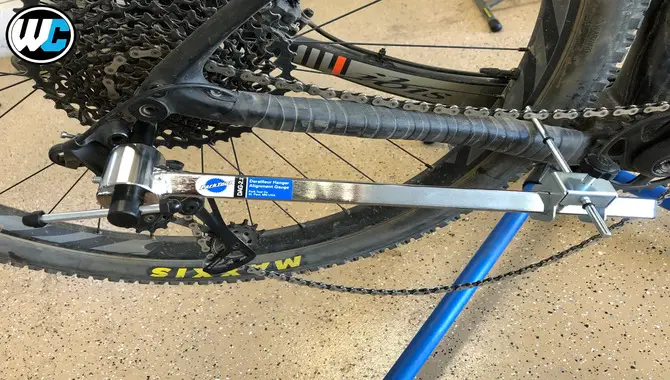
Having all the necessary tools is essential before attempting to fix your bike derailleur. Some indispensable tools for this purpose include a set of Allen keys for adjusting bolts and screws, pliers for holding cables or removing links from chains, and a screwdriver for turning screws that secure components in place.
Chain pliers can help you remove links from the chain if needed, while cable cutters are handy when trimming derailleur cables or brake cables to size. A work stand can give you hands-free access to the bike while working on the rear wheel. If you’re planning to ride your mountain bike or encounter rough terrain often, it’s always good to carry a bike repair kit with you as well.
The kit typically includes basic essentials like spare tubes or patches and tire levers that can be helpful in case of any emergencies. Ensure you keep all these tools organized and within reach so that you don’t waste time searching for them when needed.
Derailleur Adjustments
To fix a bike derailleur, there are specific adjustments that you can make. Begin by evaluating the derailleur hanger alignment and making any required adjustments. Following that, tweak the limit screws for optimal gear shifting performance. Check how tight or loose the cable tension is and replace any damaged components such as bent or broken parts. Lastly, take a test ride to ensure smooth gear changes and make any necessary modifications.
How To Adjust The High-Limit Screw
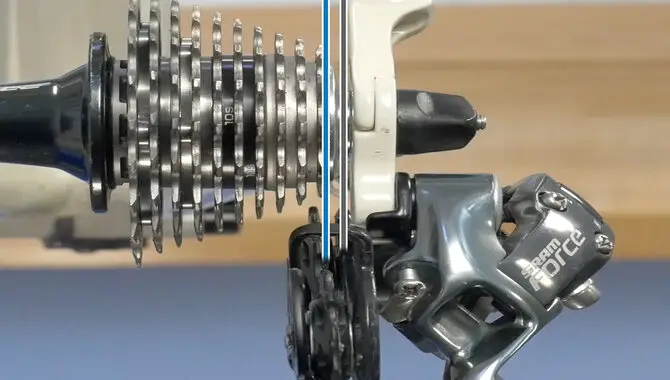
If your bike derailleur is not shifting properly, it may be time to adjust the high limit screw. This screw controls how far the derailleur can move towards the right side of the bike, which affects the chain’s movement onto larger gears. To adjust the high limit screw, shift into the smallest gear on your bike and loosen the screw until it no longer touches the derailleur.
Next, slowly turn the screw clockwise until it just touches the derailleur. Finally, turn the screw another quarter turn and test out shifting onto larger gears. If it shifts smoothly without any rubbing or clicking sounds, you have successfully adjusted your high-limit screw. Always make small adjustments and test after each to avoid over-adjusting and causing further issues with your bike’s performance.
How To Adjust The Low-Limit Screw
When adjusting your bike’s derailleur’s low-limit screw, there are a few crucial steps to follow. Begin by shifting the chain to its smallest cog and loosening the screw so that the derailleur barely touches it without putting any additional pressure on it. Then turn the screw clockwise until it is snug against the derailleur without pressing into the chain. Test ride through all gears to guarantee smooth operation while making necessary adjustments.
It is essential not to over-tighten while modifying in small increments and testing after each adjustment for a better outcome. When working on your bike’s drivetrain, components like cables’ tension or checking for hanger alignment can significantly impact your shift quality.
How To Adjust The B-Screw
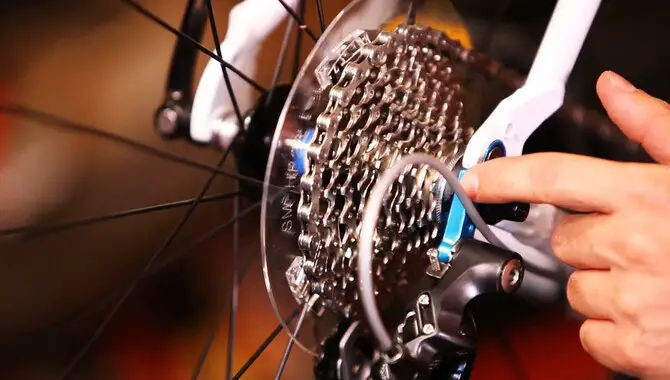
When adjusting your bike’s B-screw, shift into the largest rear cog and smallest front chainring. Turn the screw in small increments using a hex wrench or a Phillips screwdriver until you achieve enough clearance for smooth operation and no excessive noise. A half-turn of the screw should be sufficient to notice any changes in alignment, so make sure to adjust it slowly.
Adjusting this often overlooked but crucial component of your rear derailleur can greatly improve shifting performance and overall drivetrain efficiency. Before taking on this task, don’t forget to check for proper cable tension and hanger alignment. Besides, ensure that your derailleur hanger is not bent or damaged in any way as it can affect shifting accuracy.
How To Align The Derailleur
When fixing a bike derailleur, one must align it to ensure smooth shifting. This can be done by loosening the pinch bolt and manually positioning the rear derailleur, then making minor adjustments using the barrel adjuster until it lines up perfectly with your bike’s drivetrain.
It’s important to check that both pulleys are aligned correctly so they don’t rub against your chain while riding. Once you’re happy with the alignment, tighten that pinch bolt and take your bike for a test ride to ensure everything works smoothly.
Shifting Issues
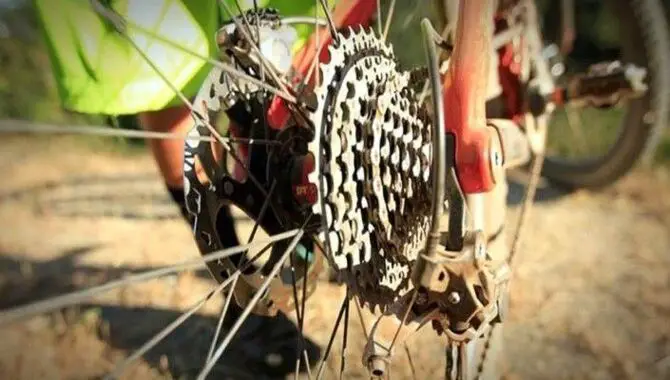
If you are experiencing difficulties with your bike’s shifting mechanism, several underlying causes could be contributing to the issue. One of the first things you should do is check whether or not your derailleur hanger is bent or damaged. Another step you can take is to examine your cables and housing for any signs of damage or wear and tear.
From there, adjusting your derailleur limit screws might be necessary for improved accuracy when changing gears. It’s also important to remember that regular maintenance in lubrication can help reduce friction between moving parts of your drivetrain system, leading to better-shifting performance overall. If all the above steps fail to resolve your problem, take your bike to a professional mechanic for further diagnosis and repair.
Why Is My Chain Getting Stuck In The Spokes?
If your chain gets stuck in your bike’s spokes, it’s likely caused by a misaligned or damaged derailleur. The derailleur could let the chain come off-track and pulled into the spokes. This issue can also occur if your chain is too loose or if you’re using gears that are too extreme for the current terrain. To prevent further damage, it’s important to stop riding until the issue has been resolved.
How To Fix The Slow Shifting
If you’re experiencing issues with slow shifting on your bike’s derailleur, there are several things you can do to fix it. Start by ensuring your cables are clean and lubricated to prevent fraying or damage. After that, try adjusting the derailleur’s cable tension until your gears shift smoothly.
If none of these solutions work, consider taking your bike to a professional mechanic for further diagnosis and repair. Some other possible culprits for slow shifting include a worn-out chain or problems with cable routing.
What To Do If Your Chain Is Slipping
If your bike’s chain is slipping, it’s likely caused by worn-out cassette teeth or a stretched chain. To fix this issue, you’ll need to replace the worn-out components. Start by inspecting your chain for signs of wear and tear such as rust, stiff links, or damaged rollers.
If you find any issues with your chain, replace it immediately. Next, check the cassette for worn-out teeth and replace them if necessary. Once both components are replaced, adjust the derailleur’s cable tension to ensure smooth shifting.
If you’re unsure how to make these repairs yourself, take your bike to a professional mechanic who can assess the issue and provide the necessary repairs. Ignoring a slipping chain can cause further damage to your bike’s components and make it unsafe to ride.
Conclusion
Fixing a bike derailleur is not as daunting as it sounds. With some basic knowledge and the right tools, you can easily troubleshoot and adjust your derailleur. The most common issues with a derailleur are misalignment, bent hangers, and cable tension problems.
It’s important to identify the issue first before starting to fix it. For example, adjusting the high limit screw will prevent the chain from shifting off the largest chainring, while adjusting the low-limit screw will prevent it from shifting off the smallest one.
If you’re experiencing slow shifting or slipping chains, there are fixes for those too. By following the steps, you can how to fix a bike derailleur and repair common issues with your derailleur. With a little practice and experience, you’ll soon become an expert at fixing bike derailleurs!
Frequently Asked Questions
What Is The Best Way To Fix A Bike Derailleur?
The best way to fix a bike derailleur is to start by cleaning and lubricating your cables, adjusting cable tension, and checking for worn-out components such as the chain or cassette. If you’re not confident in making these repairs, take your bike to a professional mechanic for assistance.
What Are Some Common Causes Of A Bike Derailleur Issue?
A bike derailleur issue can cause by a bent derailleur hanger or cage, loose or damaged cable and housing, a dirty or worn-out chain or cassette, and misadjusted limit screws or derailleur position. Regular maintenance and proper adjustment can prevent these issues.
How Can I Identify Which Part Of The Derailleur Is Causing The Problem?
First, check the cable tension and limit screws to pinpoint the issue with your derailleur. Check if it moves smoothly or catches on something by moving it manually. Inspect the chain and derailleur for damage or wear. If unsure, seek help from a professional mechanic for a thorough diagnosis.
What Are The Steps To Properly Adjust A Bike Derailleur?
Adjusting a bike derailleur involves shifting to the smallest cog and largest chainring, aligning the jockey wheel with the smallest cog using the barrel adjuster, testing all gears, making small tweaks, test riding, and fine-tuning. It may take some trial and error to find the perfect adjustment.
Are There Any Preventative Measures I Can Take To Avoid Bike Derailleur Issues In The Future?
To prevent bike derailleur issues, regularly check for worn or damaged parts, keep the derailleur and chain clean and lubricated, avoid cross-chaining, and adjust limit screws appropriately. Taking these measures can help ensure smooth shifting and avoid costly repairs.

I am passionate about writing blogs about bikes. I love riding my bike and love talking about it even more. My blog is the perfect place for anyone who loves biking as much as I do. Come check it out and learn some tips and tricks from me!

